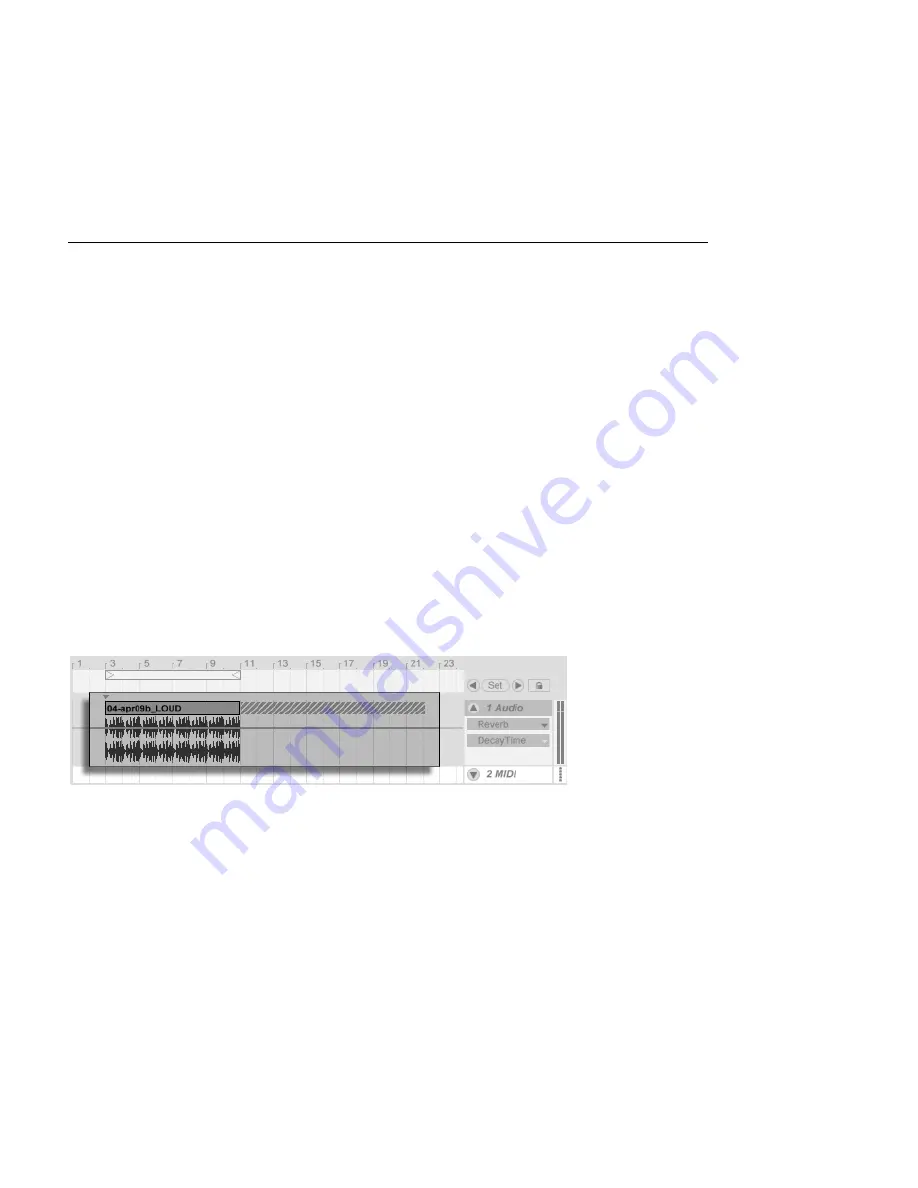
CHAPTER 29. COMPUTER AUDIO RESOURCES AND STRATEGIES
486
device or clip settings. On slower machines, you can unfreeze processor-intensive tracks
one at a time to make edits, freezing them again when you are done.
Many editing functions remain available to tracks that are frozen. Launching clips can still be
done freely, and mixer controls such as volume, pan and the sends are still available. Other
possibilities include:
Edit, cut, copy, paste, duplicate and trim clips;
Draw and edit mixer automation and mixer clip envelopes;
Consolidate;
Record Session View clip launches into the Arrangement View;
Create, move and duplicate Session View scenes;
Drag frozen MIDI clips into audio tracks.
When performing edits on frozen tracks that contain time-based effects such as reverb,
you should note that the audible result may be different once the track is again unfrozen,
depending on the situation. This is because, if a track is frozen, the applied effects are not
being calculated at all, and therefore cannot change their response to re ect edited input
material. When the track is again unfrozen, all effects will be recalculated in real time.
A Frozen Arrangement
Track with a Reverb Tail.
Frozen Arrangement View tracks will play back any relevant material extending beyond the
lengths of their clips (e.g., the tails of Reverb effects). These frozen tails will appear in
the Arrangement as crosshatched regions located adjacent to their corresponding clips.
They are treated by Live as separate, temporary clips that disappear when unfrozen,
since the effect is then calculated in real time. Therefore, when moving a frozen clip in the
Arrangement, you will usually want to select the second, frozen
tail
clip as well, so that the
two remain together.






























